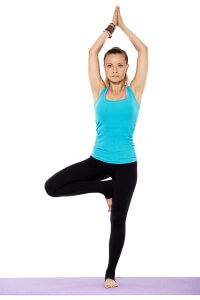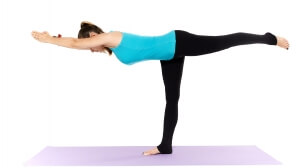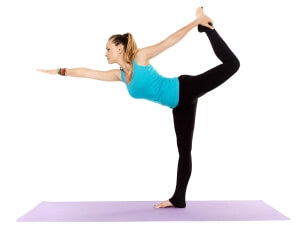
Common Claims Covered by Insurance for Yoga Teachers
October 31, 2023
Everything You Must Know Before Buying beYogi Yoga Insurance
November 16, 2023The Top 3 Yoga Poses for Gratitude Every Teacher Should Know

Yoga Poses for Gratitude
As we draw closer to the Thanksgiving holiday, I’m drawn to the subject of gratitude and how to practice it on a daily basis. Naturally, the topic of yoga poses for gratitude bloom in my mind. But why is gratitude so important?
Researchers have learned that people who express their gratitude are happier, healthier, less stressed, and less prone to depression than the average person.
If you possess a high amount of gratitude, you often live life with a sense of wonder, thankfulness, and appreciation.
Acknowledging the benefits of gratitude is one thing, but it can be difficult to feel grateful when we experience hardships.
That’s why practicing gratitude on a daily basis, whether in good times or bad, is so important.
If we give ourselves the chance to be open and become aware of all of the wonderful gifts in our lives, seeing the good in every situation, and expressing our heartfelt gratitude to others, we can increase our sense of well-being and quality of life.
So, how can we embrace gratitude on and off the mat?
By embracing the teachings from our yoga practice, we are able to slow down, find balance, and tune into our deepest compassion resulting in endless gratitude. Here are a few must-know yoga poses for gratitude.
Must-Know Tips for Practicing Gratitude Yoga
Set a Gratitude Intention
Before you start your practice, take a moment to meditate on what your gratitude yoga practice is for. Setting an intention is a big part of any yoga practice. By focusing on gratitude, setting your intention (even saying it out loud), and zeroing in on why you’re on your mat, you can dedicate your practice to exactly what you’re seeking–gratitude.
Slow Down Your Practice
We live in a world of immediate communication, results, and demands. We’re impatient, overbooked, and over stressed.
Sound familiar?
Pause and draw awareness to your breath. Notice how your breath flows through your body. Is it free-flowing, tight, or rapid? Pay attention to the thoughts flowing through your mind. Are they nurturing or self-defeating? Where are you holding tension and where do you feel more relaxed?
Incorporate Heart-Opening Asana
Tap into your gratitude by channeling your heart and your throat chakras. Taking the time (and a few extra deep breaths in these poses) can help you stretch your upper body, open your heart and throat, and prepare yourself for a practice full of gratitude. Consider poses like Bhujangasana, Ustrasana, or even Matsyasana to open your heart and throat chakras.
Deep, Slow Breaths are Important
Remember that your very breath is the physical reminder and connection of what it means to be present and be alive. Dig into that by slowing your breath, breathing deep, and offering gratitude for each inhale and exhale. Focus hard on your breathing, take the time to relish in what it means to be alive, on your mat, and able to practice in your capacity.
Find Balance
Thanks to the many balance poses that are available in yoga, I have learned that balance is not all about perfect posture and core strength. While those do play a part, balance has a lot to do with focusing the mind.
Before going into any balance pose, take a few minutes to set your focus and clear your mind. Acknowledge all thoughts and sensations, draw strength from your core, set your gaze, take a deep breath, and open into the pose. Understanding where your focus is can help to develop awareness both within and around you.
Below are three balance poses that will help you acknowledge all thoughts and sensations.
Tree Pose

Sanskrit: Vrksasana
Step by step:
- Start with your feet firmly planted on your mat and hands at your heart center.
- Draw your weight into your right foot, creating a firm foundation.
- Bring your left foot to your right heel or thigh.
- Slowly extend your arms out to the sky, becoming the branches of your tree.
- Hold for 10 to 30 seconds and then switch sides.
Airplane Pose

Sanskrit: Vimanasana
Step by step:
- Start with your feet firmly planted on your mat and hands at your heart center.
- Extend your arms out to your sides.
- Slowly begin to hinge forward from your hips as you extend your right leg behind you.
- Drawing strength from your core and setting your gaze, hold for 10 to 30 seconds.
- Switch sides.
Dancer Pose

Sanskrit: Natarajasana
Step by step:
- Start with your feet firmly planted on your mat and hands at your heart center.
- Draw your weight into your right foot.
- Bring your right hand to your hip.
- Bend your left leg and reach for your foot with your left hand.
- Slowly hinge forward as you extend your right arm overhead and left leg behind you.
- Drawing strength from your core and setting your gaze, hold for 10 to 30 seconds.
- Switch sides.
Compassion Awareness
Take a minute to think about that yoga pose that scares you or challenges you. Try to understand your limits and fears that come with this pose, then find a way to approach it with compassion.
For me, Handstand is a challenge.
No matter how much I know about how to get in and out of Handstand safely, the fear of falling over and losing control flood my brain. Before I know it, my breath constricts and I lose focus.
We all have these reactions to certain poses and while it’s easy to avoid them, there is so much to learn by confronting them in a safe environment.
Whenever I’m in the mindset to try Handstand, I know I need to have a wall as my support to provide that safety net for me, so that I can breathe and stay focused, embracing the detoxifying benefits of being inverted.
Thanks to these lessons from my yoga practice, gratitude is now a daily practice for me, both on and off the mat.
Get Yoga Insurance & Protect Your Yoga Teaching Career Instantly
Save $24



